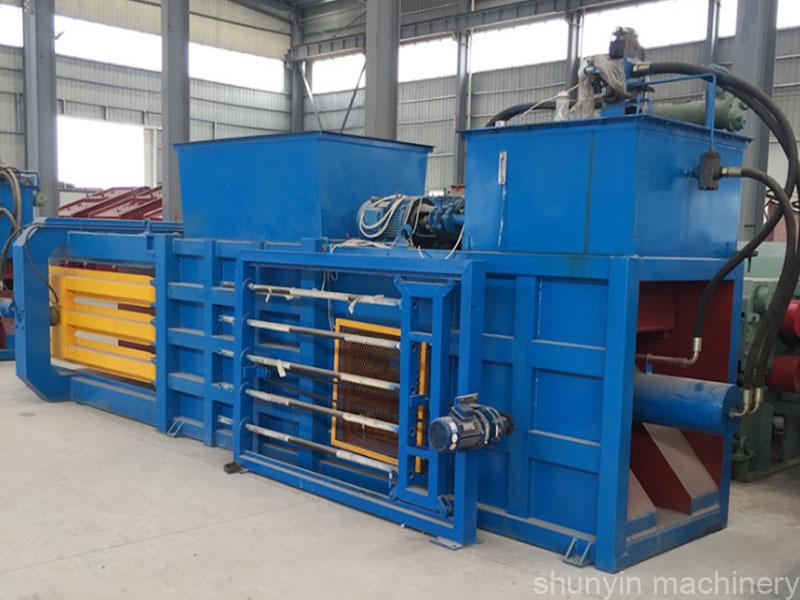
Finding the right baler can be challenging. Prices vary widely, making it hard to choose the best option for your needs.
Horizontal hydraulic balers typically range from $10,000 to $50,000, depending on features and capacity. Understanding these prices helps you make an informed decision for your business.
Let me share how I navigated the complexities of baler pricing to find the best solution for my company.
What is the average price of a baler?
Investing in a baler requires understanding its cost. On average, balers range significantly in price based on their type and functionality.
The average price for a baler falls between $10,000 and $50,000. Factors like size, capacity, and automation level play crucial roles in determining the price.

Factors Influencing Baler Prices
Several elements affect baler pricing. Here’s a breakdown:
| Factor | Impact on Price |
|---|---|
| Size | Larger balers are more expensive |
| Capacity | Higher capacity models cost more |
| Automation | Automatic features increase the price |
| Brand | Renowned brands may charge a premium |
| Customization | Tailored features can add to costs |
Understanding these factors helps in budgeting and selecting a baler that fits your operational needs.
Choosing the Right Price Range
When selecting a baler, balance your budget with the required features. For most businesses, a mid-range baler offers the best value, providing essential features without overspending.
Consider long-term benefits like durability and maintenance costs when evaluating prices. A slightly higher initial investment can lead to savings over time.
What is the price of an automatic baler?
Automatic balers offer enhanced functionality but come at a higher cost. Understanding their pricing helps determine if they’re right for your operations.
Automatic balers typically cost between $25,000 and $50,000. The increased automation features contribute to the higher price point compared to manual models.

Benefits of Automatic Balers
Automatic balers provide several advantages that justify their higher price:
- Increased Efficiency: Faster operation reduces labor costs.
- Consistency: Automated processes ensure uniform bale quality.
- Ease of Use: Less manual intervention required, lowering training needs.
Cost-Benefit Analysis
While automatic balers are more expensive upfront, they can offer significant savings in the long run. Reduced labor costs and higher efficiency can offset the initial investment over time.
| Benefit | Cost Savings |
|---|---|
| Labor Reduction | Lower staffing needs |
| Energy Efficiency | Optimized power usage |
| Maintenance | Fewer breakdowns, less downtime |
Assess your business needs to determine if the higher cost of an automatic baler aligns with your operational goals.
What is a hydraulic baler?
Hydraulic balers are a popular choice in various industries for their reliability and efficiency. Let’s explore what makes them stand out.
A hydraulic baler uses fluid pressure to compress materials into bales. This method ensures consistent bale density and reduces manual effort.

How Hydraulic Balers Work
Hydraulic balers operate by applying hydraulic pressure to compress materials. This process is efficient and adaptable to different types of waste or recyclable materials.
Advantages of Hydraulic Balers
Hydraulic balers offer several benefits:
- High Compression: Achieves greater bale density.
- Durability: Built to handle heavy-duty operations.
- Flexibility: Suitable for various materials and industries.
Maintenance and Longevity
Regular maintenance ensures hydraulic balers perform optimally. Proper upkeep can extend the lifespan of the baler, providing better return on investment.
| Maintenance Tip | Benefit |
|---|---|
| Regular Inspections | Early detection of issues |
| Hydraulic Fluid Checks | Ensures smooth operation |
| Cleaning | Prevents buildup and wear |
Investing in a hydraulic baler means prioritizing quality and long-term performance for your business.
What is the difference between vertical and horizontal balers?
Choosing between vertical and horizontal balers depends on your specific needs. Let’s compare these two types to help you decide.
Vertical balers are compact and ideal for small spaces, while horizontal balers offer higher capacity and efficiency.

Vertical vs. Horizontal Balers
Each type has distinct features that cater to different operational requirements.
Vertical Balers
- Space-Efficient: Requires less floor space.
- Lower Capacity: Suitable for smaller volumes.
- Manual or Semi-Automatic: Often less expensive.
Horizontal Balers
- High Capacity: Handles larger volumes efficiently.
- Automatic Operation: Reduces labor costs.
- Higher Investment: More expensive but offers greater output.
Choosing the Right Baler for Your Business
Evaluate your operational needs to decide which baler type suits you best. If space is limited and volumes are low, a vertical baler might be ideal. For larger operations requiring high efficiency, a horizontal baler is the better choice.
Cost Comparison
Here’s a quick comparison of costs between vertical and horizontal balers:
| Feature | Vertical Baler | Horizontal Baler |
|---|---|---|
| Price Range | $5,000 – $20,000 | $10,000 – $50,000 |
| Capacity | Low to Medium | High |
| Space Required | Minimal | Significant |
| Automation Level | Manual to Semi-Auto | Fully Automatic |
Understanding these differences helps in making an informed decision that aligns with your business objectives.
Conclusion
Choosing the right horizontal hydraulic baler involves understanding prices and features. By considering your needs and budget, you can find the perfect baler for your business.








